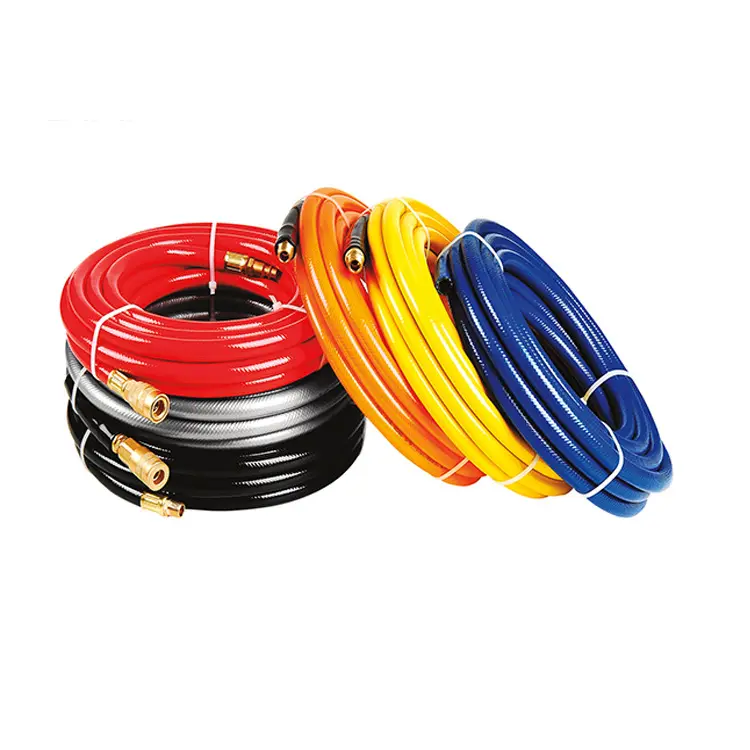Safety Guidelines for Using Oxygen and Acetylene Hoses in Welding Operations
The Importance of Oxygen and Acetylene Hoses in Welding
Welding is an essential process in various industries, providing the means to join metal parts with precision and strength. One of the most common methods of welding is oxy-fuel welding, which utilizes a combination of oxygen and acetylene gases. The proper handling and maintenance of the hoses used to transport these gases are crucial for safety and efficacy. This article will delve into the significance of oxygen and acetylene hoses, their construction, safety measures, and best practices for use.
Understanding the Oxy-Acetylene System
Oxy-acetylene welding involves the combustion of acetylene gas in the presence of oxygen to produce a high-temperature flame capable of melting metal. The system consists of gas cylinders, regulators, and hoses designed for the safe delivery of these gases. The oxygen hose is usually colored green, while the acetylene hose is red. This color-coding is vital for preventing dangerous mix-ups, as the two gases require different handling procedures.
Construction of Hoses
Oxygen and acetylene hoses are engineered from materials that can withstand high pressures and temperatures. Typically made of rubber or polymer, these hoses are reinforced with layers of textile or wire to enhance durability and flexibility. Acetylene hoses must be designed to handle the specific pressure limits of acetylene gas, which is typically stored at lower pressures than oxygen.
In addition, the hoses are manufactured to be resistant to harmful chemicals, oils, and abrasions, making them suitable for the demanding conditions of welding environments. It's essential that users check for any signs of wear, tear, or damage before each use, as compromised hoses can lead to gas leaks, which can be hazardous.
Safety Measures
Safety is paramount when using oxygen and acetylene hoses. First and foremost, users should always adhere to local regulations regarding the storage and transport of gas cylinders. Cylinders must be upright, properly secured, and stored away from heat sources or flammable materials. Additionally, hoses should be properly connected to the regulators and checked for leaks using a soapy water solution—bubbles indicate a leak that requires immediate attention.
Another critical safety measure is to ensure that the hoses are not subjected to unnecessary stress or kinks during use or storage. Kinking or sharp bends can compromise the integrity of the hoses, leading to potential failures. Always coil hoses loosely when storing them, avoiding any twists that could lead to damage.
oxygen and acetylene hoses

Best Practices for Use
To ensure optimal performance and longevity of oxygen and acetylene hoses, follow these best practices
1. Regular Inspection Before each use, inspect hoses for cracks, fraying, or any signs of wear. Replace any damaged hoses immediately.
2. Proper Connections Ensure that all connections are secure and leak-free. Use appropriate fittings that are compatible with both the hoses and the regulators.
3. Use the Correct Pressure Be mindful of the recommended pressure settings for both gases. Using an excessive pressure can increase the risk of accidents.
4. Temperature Control Avoid exposing hoses to extreme temperatures, direct sunlight, or chemicals that can deteriorate the material.
5. Training and Awareness Anyone using or handling oxy-acetylene equipment should be thoroughly trained in its proper use, maintenance, and safety measures.
Conclusion
Oxygen and acetylene hoses play a critical role in oxy-fuel welding, serving as the lifelines that deliver the gases necessary for this method. Understanding the construction, safety measures, and best practices associated with these hoses is vital for anyone involved in welding. By prioritizing safety and maintenance, users can ensure a reliable and effective welding process while minimizing the risks associated with improper handling of these gases.
-
Top Quality Oxy Acetylene Hoses for Sale Fit for Welding DemandsNewsJul.28,2025
-
The Future of Pneumatic Air Tubes in IndustryNewsJul.28,2025
-
Superior and Reliable LPG Hose Pipe Solutions for Every NeedNewsJul.28,2025
-
Exceptionally Durable and Versatile Premium Braided PVC TubingNewsJul.28,2025
-
Best Adapters for Connecting Garden Hose to PVC Pipe ConnectionsNewsJul.28,2025
-
The Essential Role of LPG Hoses in Safe and Efficient Gas DistributionNewsJul.16,2025














